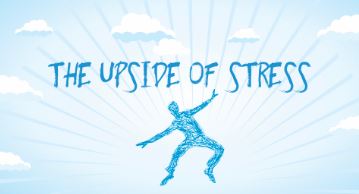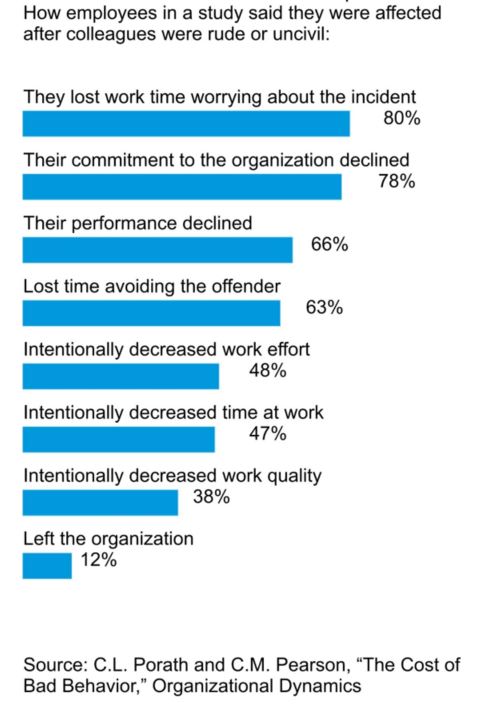
Posts Tagged "Team Skills"
The Upside of Stress Book Review
The Upside of Stress
By: Kelly McGonigal
Periodically, I share a favorite book review from Readitfor.me.
There is never enough time to read all the latest books – this tool is a great way to learn and to stay on top of the latest topics and new ideas.
The Readitfor.me tool has grown into a great resource for both personal and team growth, offering book summaries, micro courses and master classes. Check out this link: Readitfor.me. See how these tools can help build you personal and Team Strength.
Here is a summary of the Book
The Upside of Stress
by Kelly McGonigal
Book Review by Readitfor.me

As it turns out, whether or not stress is harmful has a lot to do with how you view it.
Read on to learn how to change your mindset about stress.
Stress is bad for you, right?
As Kelly McGonigal tells us in this fascinating book, the research that scientists have done on stress tell a slightly different story.
As it turns out, whether or not stress is harmful has a lot to do with how you view it.
Consider the following research findings comparing people who view stress as harmful to people who view stress an enhancing.
People who believe stress is enhancing are less depressed and more satisfied with their lives than people who view stress as harmful. They have more energy and less health issues. They are more productive at work and are happier doing it. They also have a greater confidence in their ability to cope with challenges, and even find meaning in difficult circumstances.
That’s a pretty long list of benefits just for changing your mind about what stress means to you.
Join us for the next 12 minutes as we explore what stress actually is, and how you can completely change your relationship with it.
You might even learn how to harness the stress in your life to create a more meaningful, fulfilling life.
Let’s get started.
What is stress?
We first need to start with an understanding of what stress actually is. When you are feeling stress, your body releases cortisol and adrenaline.
From an evolutionary perspective, this stress response is designed to help you. But – like stress in general – it is more feared than appreciated. We’ve come to associate stress as toxic a state which we should try to minimize as much as possible.
But, as we’ll describe as we work our way through this book, your stress response is a resource to rely on rather than an enemy to eliminate.
How stress got a bad name
We won’t spend much time on this section. Basically, a scientist by the name of Hans Selye did a lot of stress research in the 1930s and 40s that showed that stress caused negative physical reactions.
He became known as the Grandfather of Stress, and was nominated for the Nobel Prize ten times, and devoted his life to spreading the word about his research, leading us all to believe that stress is toxic.
The problem is that all of his research was performed on rats, and in situations that bear little resemblance to everyday human stress.
This is what a typical day looked like for one of Selye’s lab rats. You’d start off with unpredictable, uncontrollable shocks. Then you’d get thrown in a bucket of water and forced to swim until you started to drown. Then, finally, you’d get put into an overcrowded cage with other rats where you would fight over an inadequate supply of food.
That, McGonigal rightly points out, isn’t stress – that’s the Hunger Games for rodents.
Nonetheless, Selye made the leap from rats to humans, and from torture to every day stress, and voila – we all developed a negative view about stress.
So now you have a negative mindset about stress
In recent surveys, the American Psychological Association has found that most people in America perceive their personal levels of stress as unhealthy.
These people believe that experiencing stress:
- depletes their health and vitality
- debilitates their performance and productivity
- inhibits their learning and growth
- is negative and should be avoided.
People who have this mindset about stress are much more likely to say that they cope with stress by trying to avoid it. They are more likely to:
- Try to distract themselves from the cause of the stress instead of dealing with it.
- Focus on getting rid of their feelings of stress instead of taking steps to address its source.
- Turn to alcohol or other substances or addiction to escape the stress.
- Withdraw their energy and attention from whatever relationship, role or goal is causing the stress.
Obviously, this reinforces the belief that stress is bad and should be avoided at all costs.
But as we turn our attention towards the benefits of embracing stress, we’ll find a much different story emerges.
Changing from a negative mindset to a positive one
As it turns out, you have a choice about how you respond to stress. Victor Frankl described this as the space between stimulus and response.
A minority of people in the general population believe that stress enhances their lives. These people believe that experiencing stress:
- enhances their performance and productivity
- improves their health and vitality
- facilitates their learning and growth
- is positive and should be utilized.
Where people with a negative mindset towards stress try to cope with stress, people with a positive mindset towards stress try to use it to their advantage. They are much more likely to:
- Accept the fact that the stressful event has occurred and is real.
- Plan a strategy for dealing with the source of stress.
- Seek information, help, or advice.
- Take steps to overcome, remove, or change the source of stress.
- Try to make the best of the situation by viewing it in a more positive way or by using it as an opportunity to grow.
So, just by creating a positive mindset about stress, you can turn self-doubt into confidence, fear into courage, and isolation into connection.
All without getting rid of the stress.
Which begs the question, how do you change your mind about stress?
The insight from the research is that you get what you expect. If you expect stress to be a negative experience, that’s exactly what you will get. If you expect it to be a positive experience, that’s exactly what you’ll get.
There is evidence for this in a lot of different areas of your life. For instance, how you think about getting older has some serious consequences for you later in life. People who have a positive view of aging add an average of 8 years to their life, and have an 80% lower risk of a heart attack.
Your mindset not only helps you in the moment, but also influences you to make better decisions in the future, leading to better outcomes. It’s as though mindset matters twice.
Now let’s turn our attention to the three different ways that your new positive mindset about stress will help you lead a more productive and fulfilling life.
Stress helps you engage
In this section we’ll focus on how you can transform a threat into a challenge.
Our common reaction to stress is to avoid it, and the most common advice you get when do deal with stress in the moment is to “calm down.” Basically, you should find a way to get rid of the stress.
However, viewing the stress response as a resource can transform the physiology of fear into the biology of courage. The stress response does a number of things that will help you perform well under pressure.
It focuses your attention, heightens your senses, increases your motivation, and mobilizes energy. This is true even when the stress doesn’t feel helpful, which is the case when people experience anxiety.
When you start to feel your heart pounding or your breath quickening, remember that this is your body’s way of trying to give you more energy. When you start to feel tension in your body, remember that the stress response gives you access to your strength. Are your palms sweaty? Good, that means you are close to something that you want. Do you have butterflies in your stomach? Embrace them – it’s your guts way of saying that this is something that matters.
If you take the traditional advice and try to calm down, you are preventing yourself from accessing the energy, strength and drive that the stress gives you. So, instead of trying to take a deep breathe to try and calm down, take a deep breath and sense the energy that’s available to you.
Then, use it. Ask yourself what action you can take that is consistent with your goal in this moment.
Connect: How tending and befriending transforms stress
In this section we’ll focus on how you can activate your “tend-and-befriend” response to better deal with stress.
From an evolutionary perspective, we have this “tend-and-befriend” response to make sure we protect our offspring. Rather than get paralyzed with fear (and let our offspring get eaten by that lion), we spring into action.
It does so because it increases activity in three systems in your brain.
First, it activates the social caregiving system, which is regulated by oxytocin. When this happens you feel more empathy, connection and trust.
Second, it activates the reward system, which releases the neurotransmitter dopamine. When this happens you feel more optimistic about your ability to do something meaningful, and it primes your brain for physical action, ensuring that you don’t freeze under pressure.
And third, it activates the attunement system, which releases to neurotransmitter serotonin. When this happens, your perception, intuition and self-control are all enhanced to ensure that the actions you take have the biggest positive impact.
In other words, as McGonigal points out, the tend-and-befriend response makes you social, brave and smart. Which is a much better response than trying to avoid dealing with whatever is causing you stress.
So, when you are feeling overwhelmed, look for opportunities to do something for somebody else that goes beyond your regular responsibilities.
Fair warning – your brain is going to tell you that you don’t have the time or energy to do it. But that’s exactly why you should. The good news is that small gestures work just as well as grand gestures to activate this response, so just get into action rather than waiting for the perfect moment to do something big.
Grow: how adversity makes you stronger
In this last section we’ll focus on how stress can actually help you learn and grow.
As McGonigal points out, the idea that we grow through adversity is not new. It’s embodied in the teachings of every major religion.
The science shows that plenty good can come from stressful or traumatic experiences. Here is a partial list of some of the positive changes that are commonly reported in cases of hardship, loss or trauma:
- A sense of personal strength;
- Increased appreciation for life;
- Spiritual growth;
- Enhanced social connections and relationships with others;
- Identifying new possibilities and life directions.
The important part, McGonigal explains, is that the good that comes from difficult experiences isn’t from the event itself – it comes from you.
What it requires is for you to look back on the difficult experiences from your past, and to reflect on the positive changes that came from them. Then, when you are faced with future stressful situations, you’ll be able to recall how you were able to overcome them in the past to help you overcome them in the moment.
This creates a growth-mindset towards adversity.
Conclusion
Ultimately, if you are trying to do big things in your life (the fact that you are reading this would suggest that’s the case), you are going to face adversity. Lots of it.
How you choose to deal with it is up to you. One path leads to growth and the fulfillment of your goals, and the other leads you despair and inaction.
And when you look at it that way, there really is only one choice.
If you are like my clients, you work hard learning how to grow your company or organization. You invest the time and money to improve your team for better results and increased value. The Readitfor.me tool has grown into a great resource for both personal and team growth, offering book summaries, micro courses and master classes. Check out this link for details Readitfor.me and see how this tool can you build your company for long term success.
Call 772-210-4499 or email to set up a time to talk about tools and strategies to lead to better results.
Please share this with a friend/colleague
Developing the Most Successful Team
Sydney Finkelstein wrote an interesting article for the Wall Street Journal about hiring teams instead of individuals.
While hiring teams is not always possible or appropriate – the importance of the teams within an organization can directly affect the success of that organization.
Our Team Strength tools help companies maintain the focus on developing the most successful teams. When there is a need for an infusion of talent we use a Team approach in the selection process for those new employees.
By enlisting the help of existing team members, we efficiently identify qualified candidates while also determining their values and fit to the culture of the organization. As a result, in 60% of our engagements our clients have identified and hired two candidates for each available position.
Here’s some highlights from the article that you may find useful to building your Team Strength.
Why Companies Should Hire Teams, Not Individuals

Existing groups work well together, they contribute more quickly, and they are more likely to shake things up (in a good way)
By Sydney Finkelstein
Oct. 29, 2017 10:13 p.m. ET
Illustration: Shout For the Wall Street Journal
Team Players
- Complex problem solving
- Critical thinking
- Creativity
- People management
- Coordinating with others
- Emotional intelligence
- Judgment/decision making
- Service orientation
- Negotiation
- Cognitive flexibility
Team Skills
Elite Teams
“As my research has shown, the world’s most effective leaders know that members of a cohort typically support one another, while also pushing one another to grow and perform. These leaders explicitly encourage collegiality among colleagues to take root, while also fostering healthy competition between teammates. That unusual combination gives rise to intense team environments, which lead in turn to extremely high performance, high engagement and rapid development on the part of team members.”
From:
Why Companies Should Hire Teams, Not Individuals
By Sydney Finkelstein Oct. 29, 2017 10:13 p.m. ET
The importance of the teams within an organization can directly affect the success of that organization.
Build your Team Strength with our Team approach in the selection process for new employees.
Get started now on your Team Strength- call 772-210-4499 or email for more information or to set up and an account.

 Tim is a Consultant to Business, Government and Not-for-Profits Organizations specializing in innovative and challenging ways for organizations to survive, to thrive and to build their teams.
Tim is a Consultant to Business, Government and Not-for-Profits Organizations specializing in innovative and challenging ways for organizations to survive, to thrive and to build their teams.